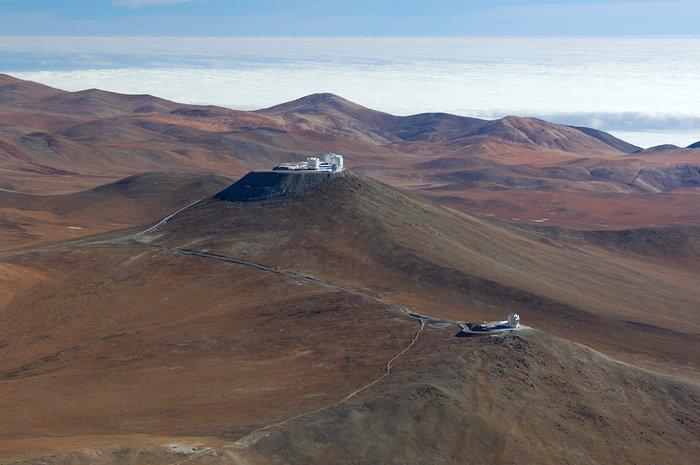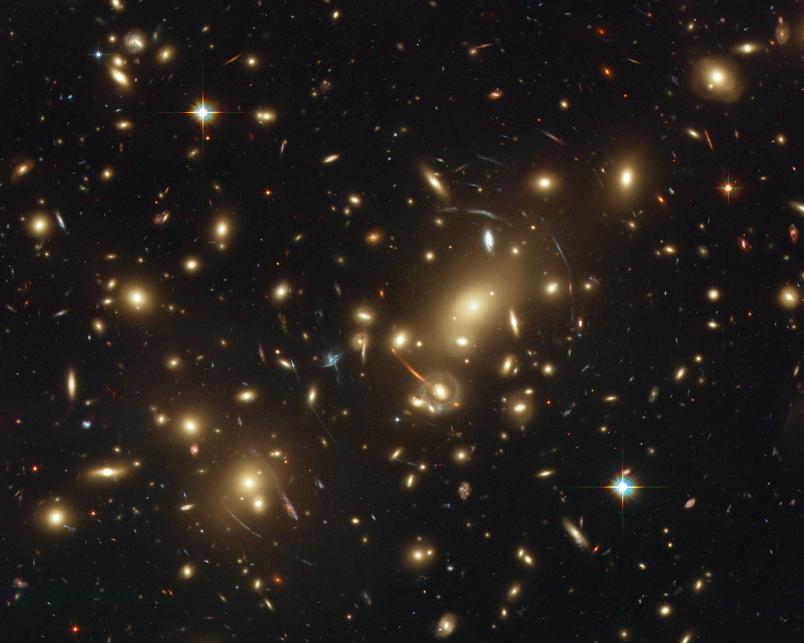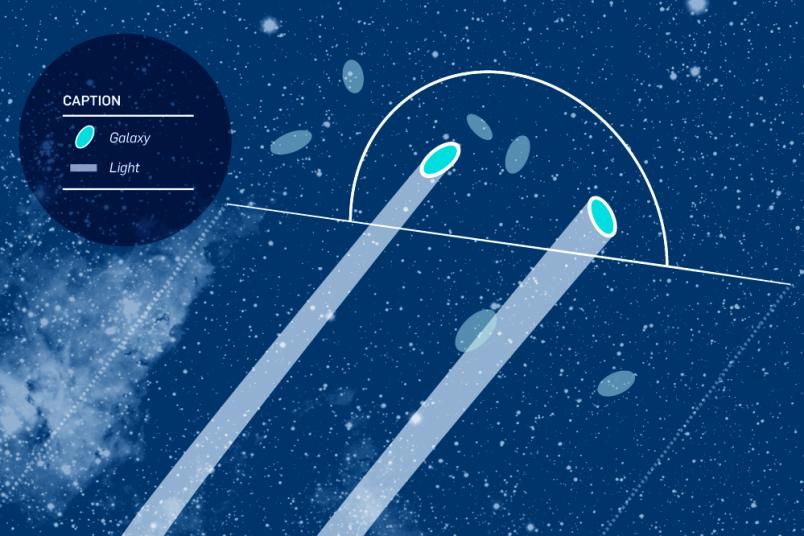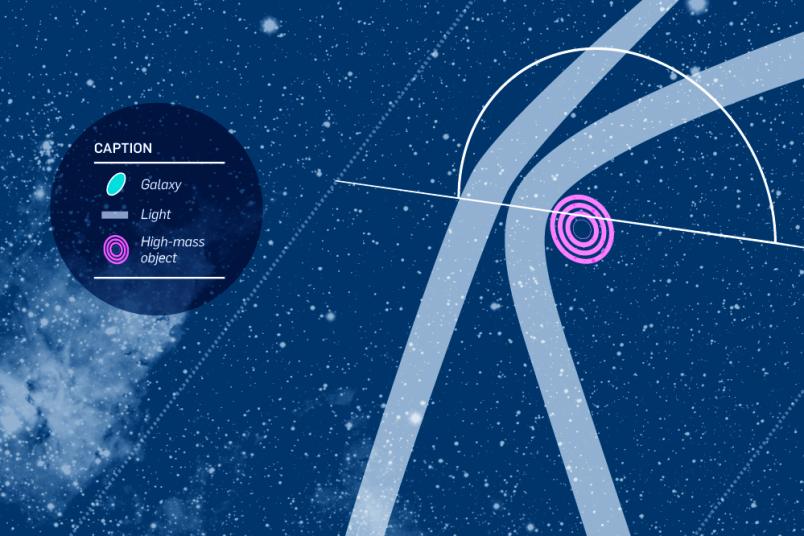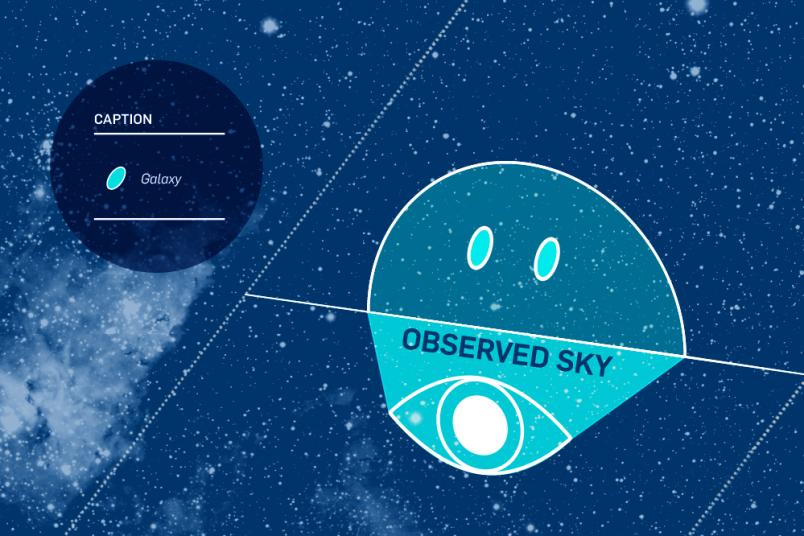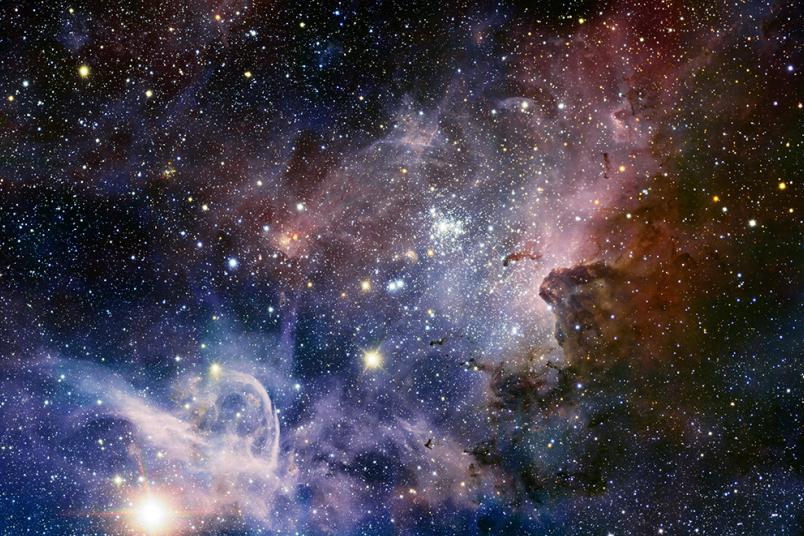
Cosmology
How much does the Universe weigh?
New results from physicists in Bochum have challenged the Standard Model of Cosmology.
“Since time immemorial people have been looking at the sky and trying to understand how much stars, planets, galaxies and other objects weigh,” says Professor Hendrik Hildebrandt, Heisenberg professor and head of the RUB research group Observational Cosmology. He and his team are investigating this question. More precisely, the group is not only interested in how much mass is present in the Universe, but also in its structure, i.e. whether the mass is evenly distributed in space or whether it occurs in lumps.
In order to weigh objects in the sky, cosmologists use the so-called gravitational lensing effect. When the light rays emitted by a galaxy pass massive objects on their way to Earth, they are deflected by the gravity of these objects. The heavier the object, the greater the deflection of the light beam. A galaxy whose light is deflected by the gravitational lensing effect therefore appears from Earth in a different place than it actually is. If researchers could measure the deflection, they could deduce its weight. But in order to do so, they have to overcome quite a few obstacles.
Difficulties in determining mass
“We only see the galaxy at its shifted location, but we do not know where it actually is,” as Hendrik Hildebrandt outlines one of the problems. In addition, researchers need to know the distances between the light-emitting galaxy, the deflecting mass and the observer in order to calculate the mass. “But as we only ever see a two-dimensional image of the sky, it is difficult to estimate how far away objects are along the line-of-sight,” elaborates the physicist.
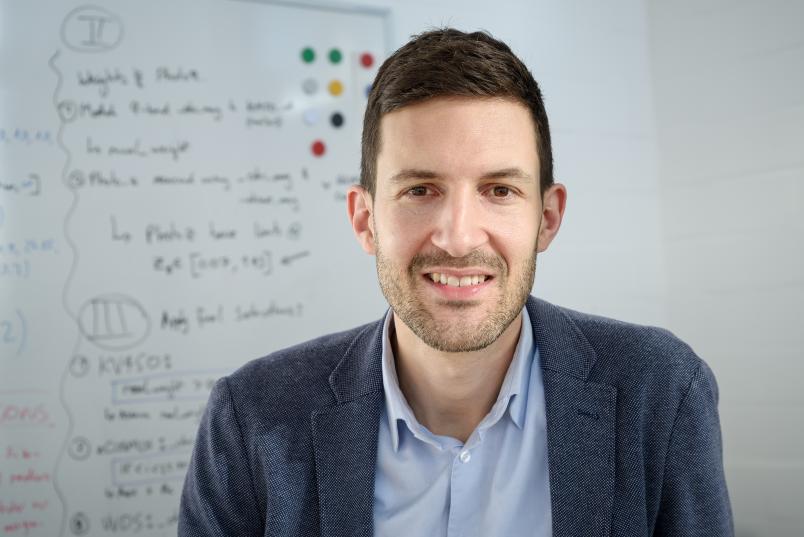
Still, researchers have developed tools to address these problems. They take advantage of the fact that the massive objects do not deflect the light like perfect lenses, but create distortions. The image of a galaxy then appears as if it was viewed through the foot of a wine glass.
Gravitational lensing
Researchers can calculate these distortions; they determine the deviation from the original shape of the galaxy – naturally, they have to know its original shape in order to do so.
Average over millions of galaxies
Typically, this can’t be done for individual objects. However, researchers know what galaxies are supposed to look like on average. They therefore average over a large number of galaxies and calculate their average distortion, also known as shear. Using statistical methods, the research team determines the distortion of tens of millions of galaxies for large sections of the sky. Based on these results, the physicists can then reconstruct the deflections of light and thus the mass of the deflecting objects – provided they know the three-dimensional distances of the objects from each other.
In order to determine the distance of objects, the researchers use the colour of the galaxies. It has long been known that light from more distant galaxies shifts to the red as it arrives on Earth. The colour of a galaxy can thus be used to determine its distance. Cosmologists take images of galaxies at different wavelengths, for example one in the blue, one in the green, one in the red and possibly several in the infrared range. They subsequently determine the respective brightness of the galaxy in the different images. This method has long been established. “It works particularly well when you include data from the infrared range,” says Hendrik Hildebrandt, who is an expert in this type of analysis and who has introduced precisely this expertise to a project called the “Kilo-Degree Survey” – which caused quite a stir in the cosmological community.

Based on the data compiled in the Kilo-Degree Survey, the research consortium determined a combined value for the density and the clumping tendency of matter in the Universe. “So far, we have been unable to distinguish clearly whether there is a lot of matter that is evenly distributed in the Universe or little matter that is extremely lumpy,” admits Hildebrandt. In the end, the analysis does not yield a single value, but rather a possible range of values into which matter density and clumping tendency might fall.
Second method for measuring the density of matter
However, scientists can measure these parameters not only with the gravitational lensing effect, as the research consortium with Hendrik Hildebrandt has done, but also with another method based on the cosmic microwave background. This refers to radiation in the microwave range, which was emitted shortly after the Big Bang and can still be measured today.
Today, values for matter density and lumpiness are available from several research consortia that used the gravitational lensing effect, as well as data from the Planck Consortium that used the cosmic microwave background. But the results do not match. Rather, the gravitational lensing measurements seem to deviate systematically from the microwave background measurements; the most obvious deviation is between the Planck Consortium and the Kilo-Degree Survey, in which Hendrik Hildebrandt is a major contributor. “There can be several reasons for this outcome,” he points out. “Either we or one of the other research consortia has made a systematic error in data evaluation – or there is something wrong with the Standard Model of Cosmology.”
This fundamental model of cosmology, based on Einstein’s general theory of relativity, describes the origin and evolution of the Universe. Researchers need it to interpret their data. “We have also included alternative models for interpretation and have actually found one that reconciles our data with those of the microwave background measurements,” says the physicist.
Standard Model of Cosmology might be wrong
In the alternative model, Einstein’s cosmological constant, which describes the gravitational force, is replaced by the so-called dark energy – a force responsible for the accelerated expansion of the Universe. “What’s interesting about the alternative model is that the dark energy in it changes over time,” explains Hendrik Hildebrandt. This could explain the discrepancy between the data sets. This is because the cosmic microwave background originates from the young Universe shortly after the Big Bang; the gravitational lensing effect, on the other hand, measures a much older Universe – the dark energy could have changed during this time span.
More extensive analysis in progress
According to Hildebrandt, it is too early yet to reject the Standard Model of Cosmology. Statistically, there is an approximately one-percent probability that the Kilo-Degree Survey data set will overlap with the Planck data. Hendrik Hildebrandt and his cooperation partners therefore intend to determine the density and lumpiness of matter even more precisely than before and are currently evaluating a more comprehensive data set. “It remains to be seen whether, after this analysis, our data will be even less compatible with the Planck Consortium’s data or whether they can both be reconciled,” he says.

This is the first time in my research career that I have reached such a critical point.
Hendrik Hildebrandt
Either way, this is a pivotal moment for the Bochum-based researcher. “It is the first time in my research career that I have reached such a critical point,” he stresses. “The noblest task of an experimental physicist is to bring down theories.” Now the Bochum-based team is eagerly waiting to see whether the explanation for the discrepancy in the data will be a quite mundane one, namely a measurement error. “But it is quite possible that we will trigger a revolution with our new data,” concludes Hildebrandt. The team expects the results to be released in late spring 2020.
